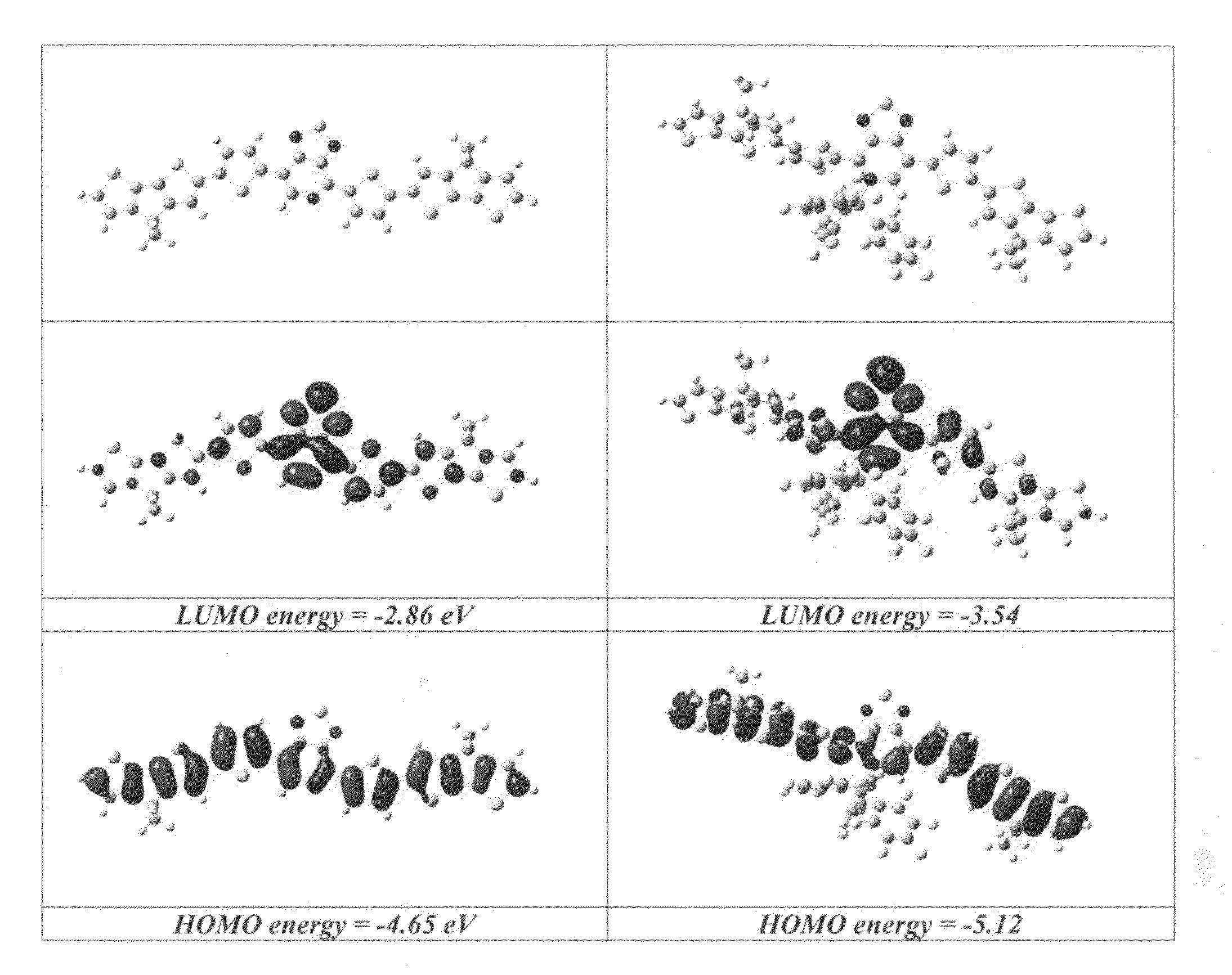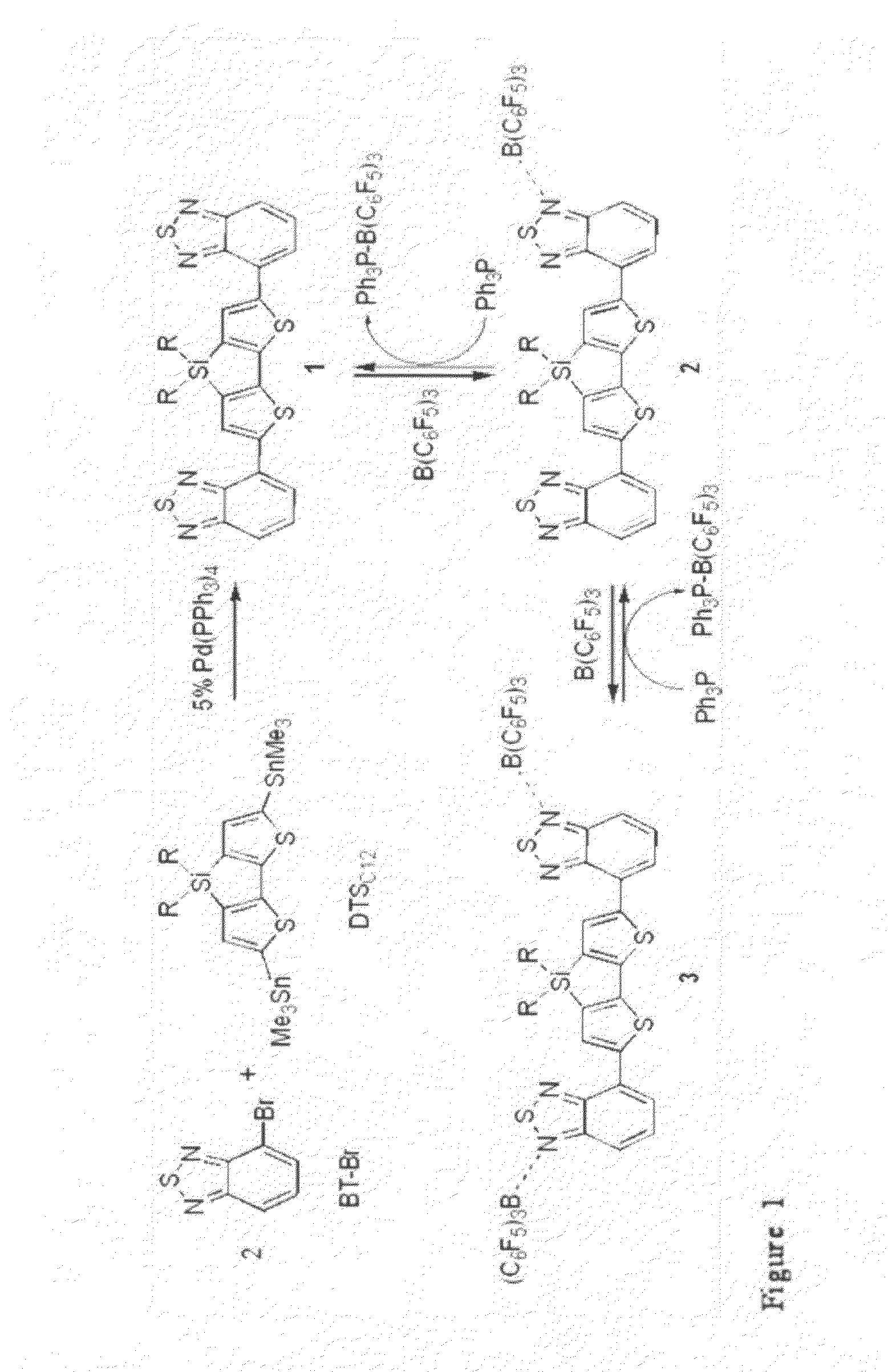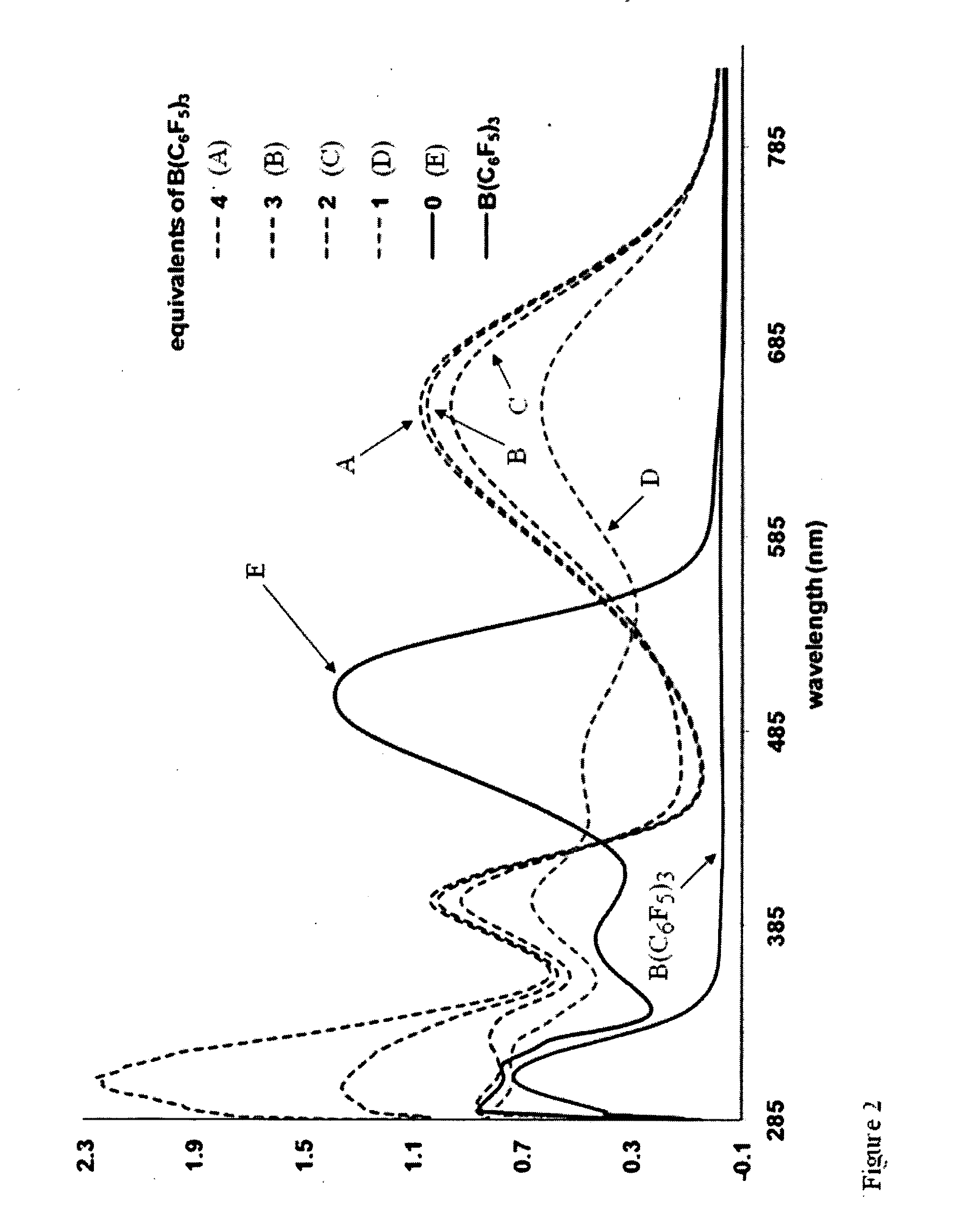Band gap control in conjugated oligomers and polymers via Lewis acids
- Summary
- Abstract
- Description
- Claims
- Application Information
AI Technical Summary
Benefits of technology
Problems solved by technology
Method used
Image
Examples
example 1
[0058]Our studies focused on 1 (Scheme 1), which has an A / D / A structure and was synthesized via microwave assisted Stille cross-coupling reaction between BT-Br and DTSC12, as outlined in Scheme 1 of FIG. 1 (11). Precipitation with methanol and purification via chromatography gave the desired product as a red solid in 85% yield. Species 1 was characterized by multinuclear NMR spectroscopy, high-resolution mass spectrometry, and elemental analysis (12).
[0059]The absorbance spectrum of 1 in 1,2-dichlorobenzene exhibits an absorption maximum (λmax) at 503 nm with an onset (λonset) at 577 nm, as shown in FIG. 2. A striking color change from red to green to blue can be observed by visual inspection upon addition of 2 equivalents of the Lewis acid B(C6F5)3 (13). Analysis by UV-visible spectroscopy reveals the disappearance of the primary band for 1 and the appearance of a new transition with λmax=647 nm. Addition of greater than 2 equivalents of B(C6F5)3 results in minimal intensity change...
example 2
Supporting Information for Example 1
[0066]General Data: Preparations were carried out on a bench top or under an atmosphere of dry, O2-free N2 employing both Schlenk line techniques and an Vacuum Atmospheres inert atmosphere glove box. Solvents (pentane, toluene, THF) were dried over sodium / benzophenone, distilled under vacuum, and stored over molecular sieves (4 Å). Solvents (methylene chloride, chloroform, 1,2-dichlorobenzene) were dried over calcium hydride, distilled under vacuum, and stored over molecular sieves (4 Å). Molecular sieves (4 Å) were purchased from Aldrich Chemical Company and dried at 140° C. under vacuum for 24 hours prior to use. Deuterated solvents were dried over CaH2 (CD2Cl2, CDCl3) or sodium / benzophenone (C6D6) and vacuum distilled prior to use. All reactants and reagents are commerically available and used as received unless otherwise noted. 4-bromo-benzo[2,1,3]thiadiazole (19) 3,3′-dibromo-2,2′-bithiophene (20) were prepared by literature methods. B(C6F5)3...
example 3
Synthesis and Characterization of Conjugated Oligomers and Polymers
[0085]In the synthesis of novel oligomers based upon the pyridathiadiazole acceptor unit, a microwave Stille-cross coupling procedure was employed (Scheme 2).
[0086]The cyclopentadithiophene unit was functionalized with hexyl chains to ensure good solubility of the desired oligomers. The mono-stannyl precursor (Me3Sn-CDTC6) was prepared by treating 4,4-Bis(hexyl)cyclopentadithiophene with 1.1 equivalents of tBuLi in THF at −78° C., followed by quenching with Me3SnCl to give the product as a yellow oil in 98% yield. It should be mentioned that stannyl derivatives of this variety are difficult to purify as they are oily residues that readily decompose on silica to give starting material. Therefore it is important to be very accurate when measuring reagents.
[0087]The 1H NMR spectra of Me3Sn-CDTC6 exhibits 3 resonances in the aromatic region, two doublets each integrating for 1 proton are attributed to the protons in the ...
PUM
| Property | Measurement | Unit |
|---|---|---|
| Volume | aaaaa | aaaaa |
| Volume | aaaaa | aaaaa |
| Volume | aaaaa | aaaaa |
Abstract
Description
Claims
Application Information
 Login to View More
Login to View More - R&D
- Intellectual Property
- Life Sciences
- Materials
- Tech Scout
- Unparalleled Data Quality
- Higher Quality Content
- 60% Fewer Hallucinations
Browse by: Latest US Patents, China's latest patents, Technical Efficacy Thesaurus, Application Domain, Technology Topic, Popular Technical Reports.
© 2025 PatSnap. All rights reserved.Legal|Privacy policy|Modern Slavery Act Transparency Statement|Sitemap|About US| Contact US: help@patsnap.com



